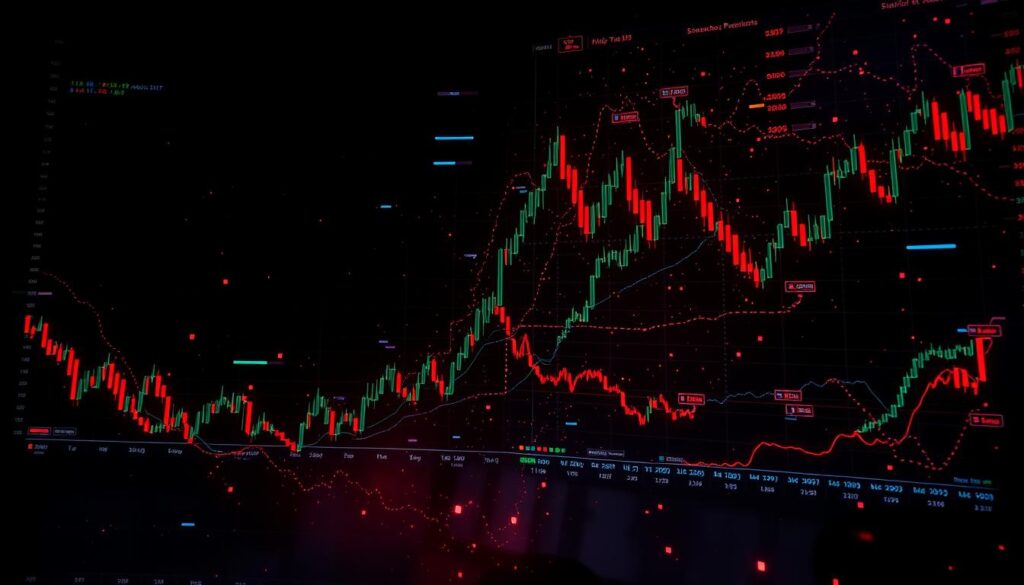Now Reading: Cryptocurrency Investment Analysis: Balancing Risk and Reward
- 01
Cryptocurrency Investment Analysis: Balancing Risk and Reward
Cryptocurrency Investment Analysis: Balancing Risk and Reward

The digital asset landscape offers a world of potential for those who know how to navigate it. This guide is designed for anyone looking to understand the core principles of successful participation in the crypto space.
Many investors are drawn by the possibility of significant growth. However, achieving positive outcomes requires more than just optimism. A thoughtful approach is essential for managing the unique dynamics of this market.
This article breaks down the fundamental relationship between potential gains and possible downsides. You will learn practical methods to evaluate opportunities with greater confidence. The goal is to provide a clear framework for making informed decisions.
Whether you are new to this arena or seeking to refine your strategy, the insights here can help. We will explore actionable techniques used by seasoned participants to pursue growth while protecting their capital.
Understanding Cryptocurrency Investment Analysis and Risk Reward
A fundamental tool for any participant in the digital asset space is the risk/reward ratio. This simple yet powerful concept provides a clear framework for evaluating any potential move before committing funds.
At its heart, the ratio compares what you might gain to what you could lose. It turns a subjective feeling into an objective number. This helps you make logical decisions.
Definition of Key Concepts
The risk/reward ratio is calculated by dividing your potential profit by your potential loss. For instance, if you aim for a $300 gain but could lose $100, your ratio is 3:1.
This means you stand to gain three dollars for every one dollar you put on the line. A favorable ratio is a cornerstone of sound crypto investment strategies. It ensures that over time, your winning positions can outweigh the losing ones.
| Potential Profit | Potential Loss | Risk/Reward Ratio | Interpretation |
|---|---|---|---|
| $500 | $100 | 5:1 | Highly Favorable |
| $200 | $100 | 2:1 | Common Target |
| $150 | $100 | 1.5:1 | Marginally Positive |
Importance of a Risk Management Strategy
Digital asset markets are known for their swift price changes. A disciplined approach is not just helpful; it’s essential for longevity.
Establishing your ratio before a trade creates a disciplined structure. It guides where to set stop-loss orders and profit targets. This prevents emotional reactions during volatile periods.
Successful market participants use this analysis consistently. It helps protect capital while positioning for meaningful potential profit. This balance is key to sustainable participation in crypto trading.
Cryptocurrency investment analysis risk reward: Strategies and Calculations
Moving from theory to practice, let’s explore the specific steps for calculating a key metric. This process turns abstract ideas into actionable numbers.
You need three price points for every potential move. These are your entry, your profit target, and your stop-loss level.
Your potential profit is the target price minus your entry. Your potential loss is the entry price minus the stop-loss.

Divide the profit by the loss to get your ratio. A result of 2 or higher is a common target. This means your gain is double your possible downside.
Setting a realistic target ratio is crucial for long-term success. A 2:1 ratio provides a mathematical edge. You can be profitable even if you win less than half your trades.
Your ideal ratio depends on your style. Day traders might accept a lower ratio for more frequent activity. Others may aim for a 3:1 ratio for larger gains per successful trade.
Consistency is the true advantage. Applying your chosen ratio to every decision creates a disciplined, systematic approach. This removes emotion and provides clear performance metrics.
Managing Market Volatility and Regulatory Risks
Navigating the crypto landscape effectively involves mastering how to handle significant price movements and policy changes. These factors can dramatically impact your outcomes. Understanding them is crucial for long-term success.
Assessing Market Volatility in Crypto
Digital asset markets are known for their dramatic price swings. Some tokens can change value by double-digit percentages in mere hours. This volatility presents both opportunity and challenge.
Established coins typically show more stable price behavior. Smaller, newer tokens often experience much greater fluctuations. Monitoring historical data helps gauge current market conditions.

Navigating Regulatory Uncertainty
Government policies around digital assets vary widely across regions. Some countries embrace innovation while others restrict activities. These differences create additional risks for participants.
Sudden regulatory announcements can trigger immediate price changes. Staying informed about legal developments is essential. This helps you anticipate potential market shifts.
Developing strategies for both volatility and regulatory risks improves your positioning. Flexibility and awareness become your greatest assets in changing conditions.
Building a Resilient Crypto Portfolio
The foundation of successful digital asset management lies in constructing a balanced portfolio. This approach helps manage exposure while pursuing growth opportunities across different market conditions.

Diversification and Asset Allocation
Spreading your holdings across various categories creates natural protection. Established digital assets like Bitcoin and Ethereum offer stability. Mid-sized projects provide growth potential with reasonable fundamentals.
Smaller, emerging tokens can deliver substantial returns but carry higher uncertainty. A thoughtful mix helps reduce potential losses when one category underperforms. Different cryptocurrencies often react differently to market events.
| Asset Category | Sample Allocation | Primary Purpose | Risk Level |
|---|---|---|---|
| Blue-Chip Assets | 50-60% | Stability & Core Holding | Lower |
| Mid-Cap Projects | 25-35% | Growth & Development | Medium |
| Emerging Tokens | 10-15% | High Return Potential | Higher |
Portfolio Rebalancing Techniques
Regular adjustments maintain your target allocation percentages. This practice naturally follows a “buy low, sell high” approach. It prevents over-concentration in assets that have appreciated significantly.
Dollar-cost averaging involves consistent, smaller contributions over time. This strategy reduces the impact of short-term price swings. It allows steady accumulation without market timing stress.
Adding stablecoins and staking opportunities can generate passive income. These elements provide balance during volatile periods. They help investors capture gains across different market cycles.
Practical How-To Guide for Crypto Trading Success
This hands-on guide details the mechanics of placing and managing your market positions. A solid plan turns research into consistent results.
Your core trading strategy must define goals and methods. This includes your preferred timeframe and criteria for every move.
Developing a Robust Trading Strategy
Start with deep research on a project’s technology and team. Understand its real-world use and community activity.
Your strategy should outline clear rules. This prevents emotional decisions during fast market moves.
Implementing Stop-Loss and Entry Points
Identify precise entry levels using your technical analysis. Set a stop-loss order immediately after entering a trade.
This defines your maximum potential loss. Your profit target should be at a favorable distance, creating a positive reward ratio.
As a position moves well, consider trailing stops. This locks in gains while allowing for more upside.
Leveraging Technical Analysis Tools
Use tools like moving averages and RSI to confirm your setups. They provide objective signals for entry and exit levels.
Apply your ratio consistently across all trades. Track performance over time to refine your trading strategy.
| Tool Type | Example | Primary Use | Strength |
|---|---|---|---|
| Trend Indicator | Moving Average | Identify Direction | Simple & Reliable |
| Momentum Oscillator | RSI | Gauge Strength | Spot Overbought/Sold |
| Volume Analysis | On-Balance Volume | Confirm Trends | Assess Buyer/Seller Power |
Advanced Tips for Optimizing Crypto Investment Returns
Taking your digital asset approach to the next level requires fine-tuning your personal risk tolerance and market awareness. This advanced stage focuses on maximizing potential gains while managing exposure.
Personalizing Risk Tolerance Approaches
Your personal risk tolerance is your financial fingerprint. It defines how much volatility you can handle emotionally and financially.
An honest self-assessment is the first step. Ask yourself how you react when prices drop sharply. Your answers will shape your entire strategy.
The golden rule is to only use capital you can afford to lose. This protects your financial stability during unpredictable market conditions. Your tolerance should guide your portfolio allocation.
Conservative investors might favor established assets. Those comfortable with higher relative risk can explore more aggressive opportunities.
The optimal ratio for implementing the risk-reward ratio varies. A common target is 2:1, but your personal comfort level is key.

Utilizing Market Trends and Data Analysis
Objective analysis helps you make informed decisions. It moves you beyond emotion and hype.
Understanding market cycles is crucial for optimizing returns. Prices move in bull and bear phases. Recognizing these patterns helps you position for gains.
View downturns as opportunities to accumulate quality assets at lower prices. This long-term approach can lead to significant profit over time.
As of early 2025, leading digital assets have shown substantial growth compared to traditional options. This highlights the unique wealth-building opportunities available.
Always conduct your own research. Evaluate projects on their technology and utility, not just social media trends. This is the best way to make informed choices and protect your capital.
Conclusion
The journey toward crypto proficiency demands a methodical framework for evaluating opportunities systematically. This article has equipped investors with essential tools to navigate digital markets confidently.
Understanding the risk/reward ratio forms the foundation of sound decision-making. Proper calculation methods and consistent application across all moves create a disciplined approach. Diversification and strategic planning help manage potential losses while positioning for meaningful profit.
Alternative participation methods like cloud mining offer different ways to engage with digital assets. Each approach carries unique considerations that require thorough investigation. The goal isn’t to avoid risk but to manage it wisely.
Continuous learning and emotional discipline remain crucial for long-term success. Take time to develop a comprehensive strategy that aligns with your circumstances. With careful planning, the rewards in this dynamic space can be substantial.













